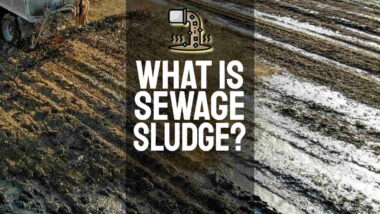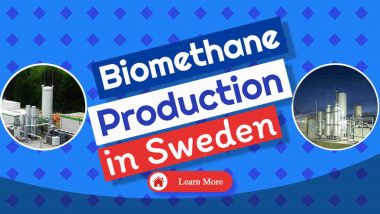Screw Separation of Biogas Digestate is a commonly used method of dewatering digestate. It uses mechanical pressure to separate organic fibres and larger particles from the liquid. The resulting liquid which flows out through the screen is usually suitable for use as a natural bio-fertiliser, for use on the farm.
The exception to this can be where the Animal By-products Regulations require pasteurisation, or for some sewage works sludges, and for Organic Municipal Waste (MOW), where heavy metals may be present.
However, the value of the fibrous digestate as a soil-improving compost depends on the feedstocks used in biogas plants, as well as local legislation. The presence of microplastics may also prevent the spreading of the fibrous material on land.
Screw Separation of Biogas Digestate is Well Proven
Screw Separation of Biogas Digestate is a proven and reliable mechanical separation process. It has several advantages. Most important is the fact that it is cost-efficient and requires minimal maintenance. Another benefit is that it is able to handle a variety of feedstocks. The device is small and when placed over a suitable collection bay the solid output can simply be allowed to fall and form a stockpile, while the liquid portion is piped away to a digestate storage tank.
Biogas digestate is an excellent source of natural fertilizer. Its high concentration of nutrients and minimal carbon footprint during production makes it a good choice for this use. Moreover, the liquid fraction of digestate may be further processed into a commercial fertiliser to rival mineral-based chemical fertilisers.
Applied pressure filtration equipment of this type use screw press augers. In this method, the effluent is transported (pushed) by a screw augur into a cylindrical screen. The screw then presses the liquid through the screen and collects it in a container around the screen.
We are delighted to bring you the news that the Börger Digestate and Manure Separator has been a shining example of great success for Kemble Farms, in the following Börger solid-liquid separation equipment Press Release.
Screw Separators are Also Known as Digestate or Manure Separators When Used on Farms
Börger sells their solid/ liquid separator technology “biogas screw separators” as dual function machines serving as both manure separators, and digestate separators (i.e. solid/ liquid separators for the output from anaerobic digestion plants (biogas plants)).
Their solid-liquid separation equipment design provides a very efficient separation technology.
The Börger Separator uses a purely mechanical solid/ liquid separation process, in which liquid parts are split from solid parts in the medium. They also supply high-quality pumps to handle all pumping requirements.
Some would argue that it might be wrong to put a piece of equipment up on a “pedestal” either figuratively or physically.
In this case study, Börger has done both!
Press Release November 2018:
Shining Screw Separator Success at Kemble Farms’ AD Plant
After climbing the steps up onto the “pedestal”, well, “platform” at Kemble Farms in Gloucestershire, there’s a first-class view of the land around and the slurry/maize-fed 300kW biogas plant that is a testament to continuous improvement.
The view of the 1450-hectare farm is also enjoyed by a shining digestate and manure Separator, as it separates fibre solids from the digester liquid.
The BioSelect digestate/ manure separator (made by Börger) can be supplied with a Börger high-density solids feed pump which is controlled to provide a balanced solid-loading rate to the separator.
A second pump is then controlled in combination with the solids feed, to pump away the separated liquid.
Beneath the Borger digestate/ manure Separator is a sight that pleases Miles Bishop (Kemble Farms’ AD Manager) just as much if not more.
Dried digestate, is ejected which is healthy-looking golden brown. It slowly, and consistently trickles down to form a giant cone that is every bit as perfectly formed as the tray of “Ferrero Rocher chocolates” in the TV advert!

But if this sounds like a frivolous food connection, this extremely good quality fibrous digestate is so good that it has substantially reduced fertiliser bills at Kemble Farms.
At the same time, it has significantly enhanced the quality of soil in which the maize and grass are grown to feed the near 1,000-strong dairy herd.
These cows are clearly content, delivering their best quality and a remarkably high volume of milk. At Kemble Farms, they have worked tirelessly to create a nearly closed-loop system, utilising the cow’s slurry to maximum effect.
“Our existing separator couldn’t cope with the demands made by our AD operation, which began almost a decade ago”, said Miles Bishop.
“The old separator required more and more intervention; resealing, replacing the shaft (twice) and the gearbox (twice). Traditional farm manure separators are just that – but if you’ve diversified into the business of renewable energy, you’ve got to start thinking more about heavy-duty industrial equipment for certain tasks”.
After trialling several digestate and manure separators, Börger’s BioSelect was chosen for its efficiency and reliability
“We’re very happy with its performance”, added Miles Bishop.
“Crust at the top of our post-digestion tank is much less of an issue since installing a Börger BioSelect Separator. In this heat-driven process, we constantly have to stay on top of the job. The rising heat dries the surface out – and without the right care and equipment, a crust will form almost in the way of an insulation blanket. When I took on Kemble Farms’ AD plant five years ago, I can remember the crust being a real time-consuming problem. Not so now.

Things have come an awful long way since then for Screw Separation technology.
At the front end of the AD operation, Kemble Farms has also invested in a fully automated Börger Powerfeed, which provides highly efficient solids feeding and mixing technology with 15 cubic metres of storage capacity.
The maize feedstock is mixed by a large mixing drum and then fed to a circulation line by the power feeder. The stainless-steel auger compresses the maize into a highly effective plug as it enters the recirculation line, excluding the air as it does so. This method reliably overcomes the problems of introducing a solid into a pressurised liquid line.
For the digester at Kemble Farms, a small fleet of Börger pumps help keep the AD operation consistent and easy to manage. Innovations and advantages of the Börger lobe pump include hardened radial and axial wear plates which can be replaced, separate mechanical seal lubrication, and low internal friction allows for short periods of dry running.
Börger’s BioSelect is available in a wide range of material options.
Around 70% of Kemble Farms’ slurry (60 tons per day) is utilised for the AD process, so there is room to increase the capacity of the 300kW electrical plant. Adding more slurry at the moment though would then result in the six tonnes per day of the farm’s maize being insufficiently digested, due to digester capacity.

The weighty energy costs of running a 19-hour/day milking parlour are now covered – and two-thirds of the renewable energy generated is exported to the National Grid.
“Using slurry as a resource made AD a good fit for us”, continued Miles.
‘Very good quality digestate’
“Subsidies were quite healthy back then – and a dairy is expensive to run. The near closed-loop system that we’ve created makes perfect sense – growing grass and maize to feed the cows, who provide the milk that we sell to a supermarket chain. The cow’s slurry we feed into the biogas digester creates our green renewable energy – and then there’s that very good quality digestate for use as a fertiliser to grow the crops. This has offset the cost of buying chemical fertiliser by a substantial amount – and has significantly improved the quality of the farm’s soil. The digestate from Screw Separation is an excellent product – easy to spread.
“Day in, day out”, added Miles Bishop, “we can depend on the Börger pumps, which despite space constraints, are very easy to maintain.”
“Together with the Powerfeed and the BioSelect Digestate/ manure Separator, this Screw Separation equipment has played an important part in seeing our gas yields go up, and our maintenance costs go down.
There’s nothing flimsy at all about the Börger equipment. It is very well engineered – and now, when we see that digestate/ manure Separator up on its platform, it gives us great reassurance that we are running this plant at optimum levels”.
Visit the Börger website here for more information.
[Article first posted in November 2018. Updated September 2022.]






